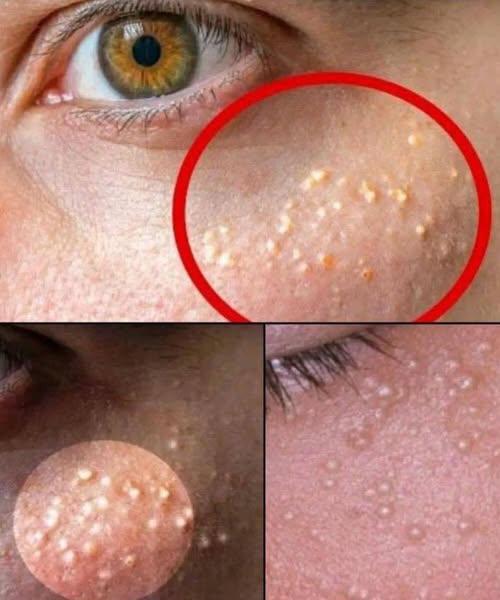Milia Explained: What Those Tiny White Bumps on Your Face Really Mean

If you’ve ever noticed small, hard white bumps on your face—especially around the eyes, nose, or cheeks—you might have mistaken them for whiteheads or pimples. But chances are, these harmless little bumps are milia.
What Exactly Is Milia?
Milia (singular: milium) are tiny cysts that form when keratin, a protein found in skin, gets trapped beneath the surface. Unlike acne, they’re not caused by bacteria or clogged pores, and squeezing them won’t make them go away. They often appear:
-
Around the eyes and eyelids
-
On the nose and cheeks
-
Occasionally on the forehead or jawline
Milia can affect anyone—adults, children, and even newborns.
Why Do They Appear?
There are several reasons why milia might develop:
-
Skin trauma (burns, rashes, or injury)
-
Heavy skincare products that block natural exfoliation
-
Sun damage that thickens and hardens the outer layer of skin
-
Natural skin turnover issues as we age
Are They Dangerous?
No—milia are completely benign and usually disappear on their own over time. However, they can be frustrating for cosmetic reasons.
Natural and Safe Home Remedies for Milia
While dermatologists can remove milia with professional tools, many people prefer gentle, at-home approaches. Here are some natural ways to help your skin heal:
1. Gentle Exfoliation
Use a mild exfoliant 2–3 times a week. Look for products with lactic acid or fruit enzymes to encourage natural skin turnover.
2. Steam Therapy
Exposing your face to gentle steam (such as from a bowl of hot water or during a shower) can soften the skin and help clogged keratin rise to the surface.
3. Aloe Vera
Applying pure aloe vera gel soothes irritation and supports skin renewal. Its anti-inflammatory properties may help the bumps fade faster.
4. Honey Masks
Raw honey is naturally antibacterial and moisturizing. A thin layer applied for 10–15 minutes can keep skin soft and prevent buildup.
5. Jojoba or Rosehip Oil
Light, non-comedogenic oils can nourish the skin without clogging pores—helping balance natural cell turnover.
What NOT to Do
-
❌ Do not squeeze or pick at milia (this won’t work and can cause scarring).
-
❌ Avoid harsh scrubs or strong acids—they can irritate sensitive skin.
-
❌ Don’t expect overnight results—milia often take weeks to clear naturally.
When to See a Dermatologist
If milia are widespread, persistent, or causing discomfort, a dermatologist can remove them quickly with sterile tools. Professional treatment is the safest way to get rid of stubborn cases.
Final Thoughts
Milia may look like stubborn whiteheads, but they’re simply harmless skin cysts that usually resolve with time. By supporting your skin with gentle, natural care, you can speed up the healing process and prevent new bumps from forming.
✨ Remember: Healthy skin takes patience—treat it kindly, and it will thank you.